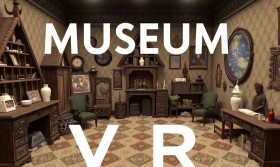Hearthstone: Heroes of Warcraft – Card Battling in Azeroth – Reviewed
By [Your Name]
Introduction
Hearthstone: Heroes of Warcraft is a free-to-play digital collectible card game (CCG) developed and published by Blizzard Entertainment. Set in the Warcraft universe, the game brings iconic characters, spells, and mechanics from Azeroth into a fast-paced, strategic card game. Since its release in 2014, Hearthstone has evolved with expansions, new game modes, and competitive play, making it one of the most popular CCGs worldwide.
In this review, we’ll explore Hearthstone’s gameplay mechanics, deck-building strategies, expansions, and overall player experience to determine whether it remains a top contender in the digital card game genre.
Gameplay Mechanics
Core Rules & Objectives
Hearthstone follows a turn-based system where two players (or a player vs. AI) compete to reduce their opponent’s health from 30 to 0. Each player starts with a deck of 30 cards, drawing one card per turn while managing mana crystals, which increase by one each turn (up to 10).
Key gameplay elements include:
- Minions: Summon creatures to attack or defend.
- Spells: Cast powerful effects for immediate impact.
- Weapons: Equipable by certain classes for direct attacks.
- Hero Powers: Unique abilities tied to each class.
Classes & Strategies
Hearthstone features 11 unique classes, each with distinct cards and hero powers:

- Mage (Jaina Proudmoore) – Spell-heavy, burn damage.
- Rogue (Valeera Sanguinar) – Combo mechanics, stealth.
- Warrior (Garrosh Hellscream) – Armor gain, weapon synergy.
- Priest (Anduin Wrynn) – Healing and control.
- Hunter (Rexxar) – Aggressive, beast synergy.
- Warlock (Gul’dan) – Self-damage for card draw.
- Paladin (Uther) – Buffs and board control.
- Shaman (Thrall) – Overload mechanic, totems.
- Druid (Malfurion) – Ramp mana, flexible playstyle.
- Demon Hunter (Illidan) – Aggressive, high-tempo.
- Death Knight (Arthas) – Introduced in later expansions, focusing on undead synergies.
Each class encourages different playstyles, from aggro (fast-paced) to control (slow, reactive) and combo (high-skill setups).
Deck-Building & Meta
Constructing a Winning Deck
A well-built deck requires:
- Mana Curve Balance: Ensuring early, mid, and late-game plays.
- Synergy: Cards that work well together (e.g., Beast Hunter, Pirate Warrior).
- Tech Choices: Adapting to the meta with counters like Silence or Taunt minions.
Meta & Competitive Play
Hearthstone’s meta shifts with balance patches and new expansions. Recent expansions like Murder at Castle Nathria and Titans introduced new mechanics like Infuse and Titan minions, keeping gameplay fresh.
The Standard format rotates yearly, while Wild allows all cards, leading to broken combos (e.g., Questline Druid).
Expansions & Content Updates
Blizzard releases 3-4 expansions per year, each adding 130+ cards, new mechanics, and single-player adventures. Notable expansions include:
- Knights of the Frozen Throne (2017): Introduced Death Knight Heroes.
- Rise of Shadows (2019): Started the Year of the Dragon storyline.
- Scholomance Academy (2020): Added Dual-Class cards.
- United in Stormwind (2021): Introduced Questlines.
- March of the Lich King (2022): Brought Death Knight as a playable class.
Additionally, Battlegrounds (auto-battler mode), Mercenaries (RPG-style mode), and Duels (roguelike PvP) offer variety beyond standard play.
Visuals & Sound Design
Hearthstone’s cartoonish art style stays true to Warcraft’s aesthetic, with animated card effects and voice lines adding personality. The soundtrack, composed by Peter McConnell, enhances immersion with tavern-like tunes and epic battle themes.
Monetization & Free-to-Play Experience
While Hearthstone is free, acquiring cards can be grindy. Players earn:
- Gold (from quests/wins) to buy packs.
- Dust (from disenchanting extras) to craft cards.
- Battle Pass (Tavern Pass) for bonus rewards.
Paying players can buy expansions, bundles, or cosmetics (hero skins, card backs). While competitive play is possible without spending, keeping up with the meta may require investment.
Pros & Cons
Pros:
✔ Easy to learn, hard to master – Simple rules but deep strategy.
✔ Constant updates – Expansions keep the game fresh.
✔ High replayability – Multiple modes and deck possibilities.
✔ Engaging single-player content – Adventures and puzzles.
Cons:
❌ Can be expensive – Keeping up with meta decks costs money/time.
❌ RNG-heavy mechanics – Some games feel decided by luck.
❌ Balance issues – Certain decks dominate before nerfs.
Final Verdict – 8.5/10
Hearthstone remains one of the best digital card games, offering strategic depth, frequent updates, and a vibrant community. While its monetization can be frustrating, the core gameplay is addictive and rewarding. Whether you're a casual player or a competitive grinder, Azeroth’s card battles await!
Tags:
Hearthstone #CardGame #Blizzard #Warcraft #GamingReview #CCG #DeckBuilding #Expansions #Meta #StrategyGame
Would you like any modifications or additional sections? Let me know!


















